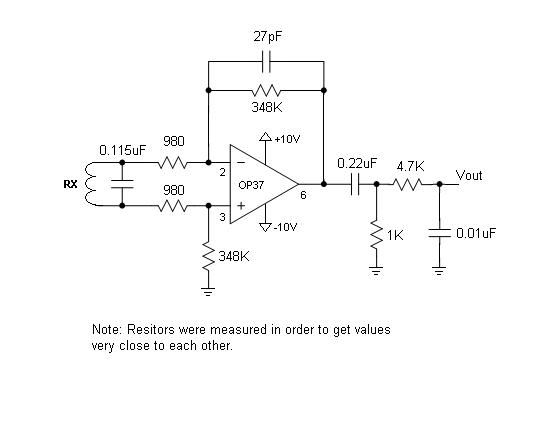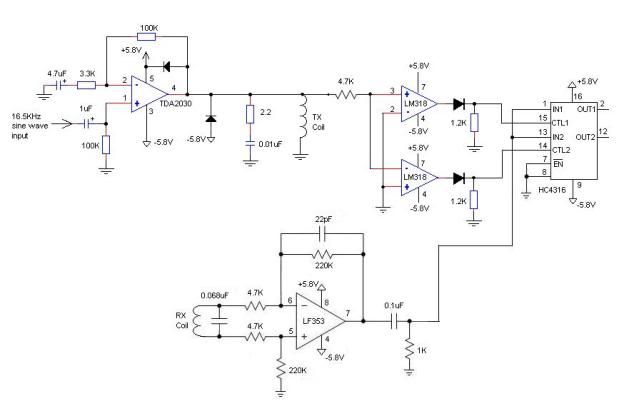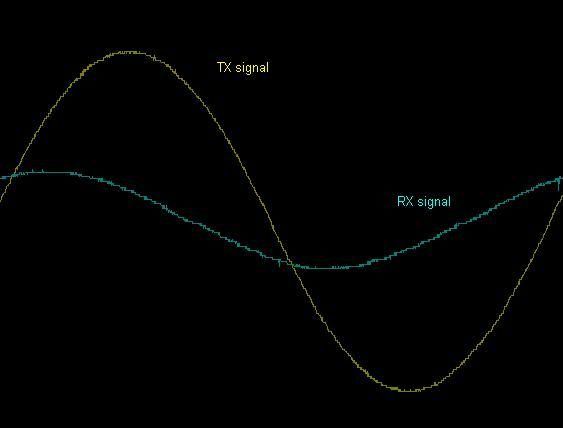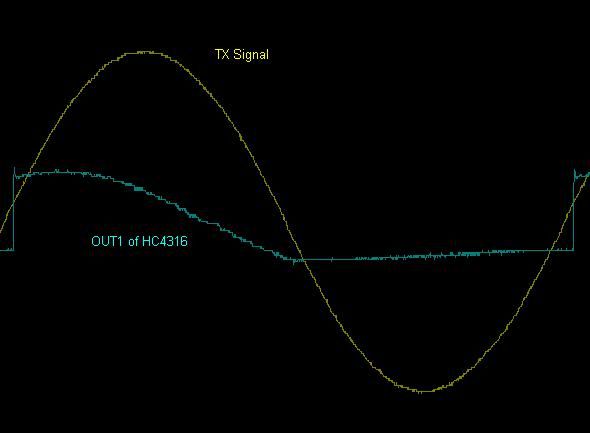Preamp circuit is just good enough, and regarding microvolt levels, you just need to detect microvolt change imposed to some residual signal level, not to absolutely detect that signal level above noise floor. Mostly not involving input amp, but later stages. This change is closely related to MD motion mode response, gain is achieved in relatively narrowband low frequency circuits, later ,after demodulator stage. Immediately after demodulator (sync detector) stage, signal is DC, static, varying according to X or Y amplitude in that channel. Next stage is single peak when coil is swept over target, last stage is “second derivative” response, going first down, then to positive, and again down, this positive part is what is detected.
So this is “secret part” in all this, very small changes, uV level, detected when imposed on 1000 times or more stronger unbalance or ground signals (still milivolts), in dedicated detector circuit.
At something like 350x gain amplifier, 1Vpp means reasonably good coil balance, but you not need that high gain here, compensate later, this way “dynamic range” will be compromised, even strong ground mineralisation component can saturate input stage, then, game is over, no matter what you do after that.
Dynamic range! May look pointless with comparator circuits, but it is not! (perhaps more competent people on this forum can explain this in more details)
So this is “secret part” in all this, very small changes, uV level, detected when imposed on 1000 times or more stronger unbalance or ground signals (still milivolts), in dedicated detector circuit.
At something like 350x gain amplifier, 1Vpp means reasonably good coil balance, but you not need that high gain here, compensate later, this way “dynamic range” will be compromised, even strong ground mineralisation component can saturate input stage, then, game is over, no matter what you do after that.
Dynamic range! May look pointless with comparator circuits, but it is not! (perhaps more competent people on this forum can explain this in more details)



 now, that is interesting. I think the light is coming on now.
now, that is interesting. I think the light is coming on now. 

 ok, now I'm starting to get it.
ok, now I'm starting to get it.






Comment